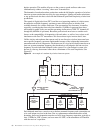
Chapter 7 - Design of Wireless Intercom Systems 95
C HAPTER
7
C
HAPTER
7
D
ESIGN
OF
W
IRELESS
I
NTERCOM
S
YSTEMS
TOM TURKINGTON
Introduction
The design, and subsequent operation, of a wireless intercom system is, like any wireless
network, highly dependent on numerous factors. Some of these factors you will have
control over, but many you will not. The key to successful wireless system design, whether
it be intercoms, talent audio, or roving camera, is to gather the information related to all of
the variables before you get started and then match the system components and
architecture to your specific requirements. There is no such thing as a one size fits all
wireless system. In this chapter, we explore some Radio Frequency (RF) theory that allow
you to have a better understanding of how RF works. We will also look at many of the key
components of a wireless communications system and how they go together to create the
desired effect.
Back-to-Basics
In this section, we discuss the theory of how RF signals act and how they are affected by
various conditions. There is some math discussed here, but only enough to convey the
principles at hand. The idea is to give you a good working knowledge of RF principles, not
make you an expert in Bessel functions. Old RF pros can probably skip this section,
although a refresher of this material is almost always appropriate.
First, let’s answer the question, “What is RF?” Contrary to popular belief, the frequency of
a signal does not determine whether it is an RF signal or not. The defining factor for RF
signals is the medium through which they propagate. All energy that travels in waves
propagates through some medium which allows the wave to move from one location to
another. In the case of sound, the medium is typically air or water or some other physical
mass. RF signals on the other hand, regardless of frequency, always propagate or move
through the electromagnetic spectrum. Where as sound needs some physical mass to
move, RF signals do not. The electromagnetic spectrum exists everywhere (as far as we
know), and enables RF signals to move through the vast vacuum of space where sound
waves could never go.


















